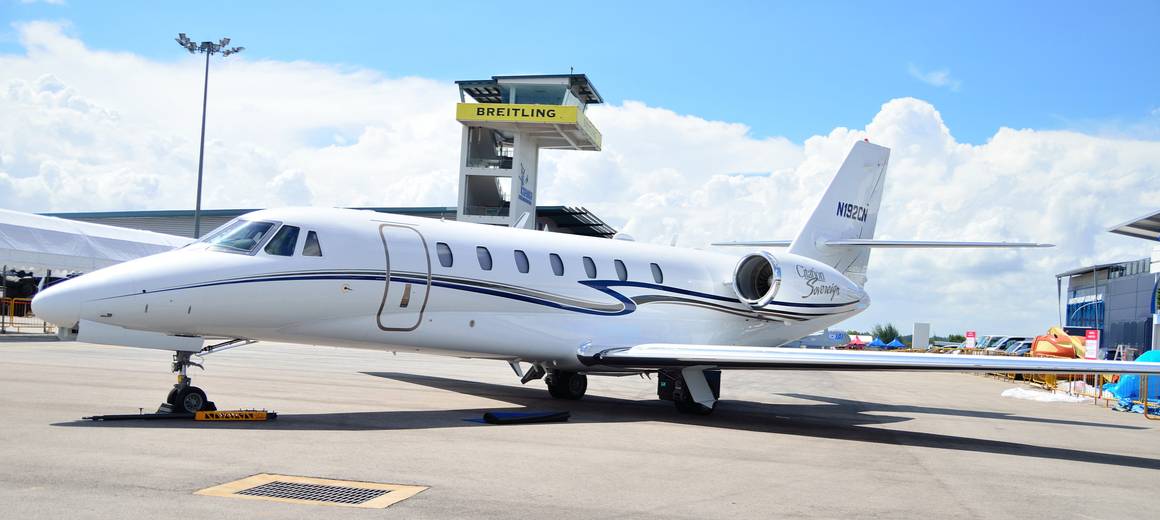The Challenges of Empty Legs in Private Aviation
The private aviation industry has long grappled with the issue of “empty legs” – flights where private jets return to their home bases or reposition to new locations without any passengers on board. These empty leg flights represent a significant source of inefficiency and lost revenue for operators, as they are essentially unproductive legs that generate no direct income.
The prevalence of empty legs in private aviation can be attributed to several factors. Firstly, the nature of the industry often requires aircraft to be strategically positioned in different locations to serve the needs of their clients. This can result in empty repositioning flights, where a jet must fly to a new airport to pick up or drop off passengers.
Secondly, the highly personalized and on-demand nature of private jet travel means that itineraries are frequently subject to last-minute changes and cancellations. This can leave operators with empty legs as they scramble to reposition aircraft to meet the changing needs of their clients.
Finally, the seasonality and variable demand patterns in the private aviation market can also contribute to the challenge of empty legs. During off-peak periods or in certain geographic regions, there may be an oversupply of aircraft relative to the number of passengers, leading to a higher incidence of unproductive flights.
Deadhead Flights: The Anatomy of Empty Legs
In the context of private aviation, the term “deadhead flight” is often used interchangeably with “empty leg.” These flights refer to the repositioning of an aircraft without any passengers on board, either to pick up new passengers or to return the aircraft to its home base.
Deadhead flights can occur for a variety of reasons, including:
- Positioning Flights: After dropping off passengers at their destination, the aircraft must be repositioned to a new location to pick up the next set of clients. These flights are often undertaken without any passengers on board.
- Relocation Flights: When an operator needs to move an aircraft to a different base of operations, perhaps to serve a new market or to undergo maintenance, they may undertake a deadhead flight to transport the empty aircraft to its new location.
- Backfill Flights: In the event of a last-minute cancellation or change in plans, an operator may need to reposition an aircraft to a different airport to serve a new client. This can result in an empty leg as the aircraft is moved to the new pickup location.
- Seasonal Repositioning: Some private aviation operators may seasonally reposition their aircraft to different geographic regions to meet shifting demand patterns. These seasonal relocation flights can often be undertaken without passengers on board.
Regardless of the specific reason, deadhead flights represent a significant challenge for private jet operators, as they generate no direct revenue while still incurring the costs of fuel, crew, and other operational expenses.
The Rise of Empty Leg Aggregators and Marketplaces
In recent years, the private aviation industry has witnessed the emergence of “empty leg aggregators and marketplaces” – platforms that aim to help match available empty leg flights with potential passengers. These innovative solutions have sought to transform the challenge of empty legs into an opportunity for operators and customers alike.
The key players in this space include:
Jet Sharing Platforms
Companies like JetSmarter, Blade, and Victor have created online marketplaces where private jet owners and operators can list their available empty leg flights. Customers can then browse and book these flights, often at a significant discount compared to traditional charter rates.
These platforms leverage a shared economy model, allowing individuals to purchase seats on otherwise empty legs, rather than having to charter an entire aircraft. This democratizes access to private aviation and helps fill otherwise unproductive flights.
Brokerage and Matching Services
Firms like PrivateFly, LunaJets, and XO offer more specialized brokerage and matching services for empty leg flights. These companies maintain extensive databases of private jet operators and their available empty legs, and they use sophisticated algorithms to match these flights with potential customers.
By acting as intermediaries, these brokers can negotiate better rates for their clients and ensure a higher level of reliability and service compared to direct bookings with operators.
Operator-Owned Platforms
Some of the larger private jet operators, such as NetJets, Flexjet, and VistaJet, have developed their own internal platforms to manage and sell their empty leg inventory. These vertically integrated solutions allow the operators to maintain more control over the pricing and distribution of their empty flights.
These operator-owned marketplaces often offer additional benefits to their loyalty program members, such as priority access to empty leg flights or discounted rates.
Aggregation and Optimization Tools
A number of specialized software companies have emerged to help private jet operators and brokers better manage their empty leg inventory. These tools use advanced algorithms to analyze flight schedules, positioning, and demand patterns to identify opportunities for empty leg optimization.
Examples of these aggregation and optimization platforms include FlyVictor, JetNet, and PrivateFly’s “Empty Leg Optimizer.” By providing greater visibility and control over empty leg data, these solutions enable more efficient matching and pricing of these flights.
The Benefits of Empty Leg Optimization
The rise of empty leg aggregators and marketplaces has delivered a range of benefits to both private jet operators and consumers:
Improved Utilization and Profitability
For operators, the ability to monetize empty leg flights represents a significant opportunity to improve the overall utilization and profitability of their aircraft. By filling these otherwise unproductive legs, they can generate additional revenue and enhance the efficiency of their operations.
Increased Accessibility and Affordability
From the consumer perspective, the availability of discounted empty leg flights has made private aviation more accessible to a broader range of individuals and businesses. Compared to the cost of chartering a full aircraft, empty leg bookings can offer savings of 30-70% or more.
This increased accessibility has the potential to expand the customer base for private aviation, drawing in those who may have previously been priced out of the market.
Enhanced Sustainability
The optimization of empty leg flights has the added benefit of improved environmental sustainability. By reducing the number of unproductive flights and maximizing the utilization of each aircraft, empty leg platforms can help to lower the industry’s carbon footprint.
This aligns with the growing focus on sustainability across the aviation sector and appeals to eco-conscious consumers who are seeking more environmentally-friendly travel options.
Greater Transparency and Reliability
The emergence of empty leg aggregators and marketplaces has also brought greater transparency and reliability to the private aviation industry. Customers can now easily compare pricing and availability across multiple operators, and they can trust that the flights they book will be delivered as promised.
This increased transparency and reliability helps to build trust and confidence in the private jet experience, further driving growth in the market.
The Challenges of Empty Leg Optimization
While the rise of empty leg aggregators and marketplaces has delivered numerous benefits, the industry also faces a range of challenges in optimizing these flights:
Dynamic and Unpredictable Schedules
Private jet operators often have highly dynamic and unpredictable flight schedules, making it difficult to accurately forecast and plan for empty leg opportunities. Weather, last-minute changes, and other operational factors can disrupt the best-laid plans, leaving aggregators and brokers scrambling to match supply and demand.
Pricing Complexities
Determining the optimal pricing for empty leg flights can be a complex and nuanced task. Factors such as aircraft type, location, time of day, and demand all play a role in shaping the appropriate pricing. Aggregators must balance the need to offer attractive discounts to customers with the operator’s desire to maximize revenue.
Regulatory Hurdles
The private aviation industry is subject to a complex web of regulations, which can create challenges for empty leg optimization. Rules around commercial operations, charter flights, and aircraft positioning vary by jurisdiction and can limit the flexibility of operators and aggregators in how they manage their empty leg inventory.
Data and Integration Challenges
Effective empty leg optimization requires the seamless integration of data across multiple systems and platforms. Aggregators must be able to access and analyze real-time flight information, inventory availability, and customer demand data. Establishing these integrations can be technically complex and resource-intensive.
Competitive Dynamics
As the empty leg market has matured, competition has intensified among the various aggregators and marketplaces. This has led to pricing pressures, as well as efforts by operators to maintain more control over their own inventory and distribution channels.
Navigating the Complexities of Deadhead Flights
The optimization of empty leg or deadhead flights involves a delicate balance of factors, from technical logistics to regulatory compliance. Understanding the nuances of these flights is crucial for private jet operators, aggregators, and customers alike.
Logistical Considerations
Deadhead flights require meticulous planning and coordination to ensure the efficient repositioning of aircraft. Operators must consider factors such as:
- Aircraft Availability: Maintaining an up-to-date understanding of the location and availability of their fleet is essential for identifying and scheduling deadhead flights.
- Crew Scheduling: Ensuring that pilots and other crew members are available and properly positioned to operate deadhead flights is a critical logistical challenge.
- Fuel Management: Optimizing fuel consumption and refueling requirements for deadhead flights is crucial to maintain cost-effectiveness and operational efficiency.
- Airport Logistics: Coordinating with airports and ground handling services to facilitate the smooth arrival and departure of deadhead flights is a key operational consideration.
Regulatory Compliance
The private aviation industry is subject to a complex web of regulations that can impact the planning and execution of deadhead flights. Operators and aggregators must navigate a range of compliance considerations, including:
- Commercial Operations: Rules governing the commercial use of private aircraft can vary by jurisdiction and may limit the ability to monetize empty leg flights.
- Cabotage Restrictions: Regulations around the transportation of passengers between domestic airports can restrict the routing and pricing of deadhead flights.
- Aircraft Positioning: Some regulations may impose restrictions on the repositioning of aircraft, particularly across international borders.
- Safety and Security: Adherence to stringent safety and security protocols is paramount for all private aviation operations, including deadhead flights.
Pricing and Revenue Management
Determining the optimal pricing for deadhead flights is a delicate balancing act. Operators and aggregators must consider a range of factors, including:
- Market Demand: Understanding the prevailing demand for empty leg flights in a given market or route is crucial for setting appropriate pricing.
- Competition: Monitoring the pricing strategies of rival operators and aggregators can help inform competitive positioning.
- Cost Structures: Ensuring that deadhead flight pricing covers the direct and indirect costs associated with these operations is essential for maintaining profitability.
- Customer Perception: Striking a balance between offering attractive discounts and maintaining the perceived value of private aviation is a key consideration.
Data-Driven Decision Making
Effective management of deadhead flights requires a data-driven approach, leveraging advanced tools and technologies to:
- Forecast Demand: Analyzing historical data and market trends to predict future demand for empty leg flights.
- Optimize Scheduling: Using sophisticated algorithms to identify the most efficient routing and timing of deadhead flights.
- Monitor Performance: Tracking key metrics such as utilization, revenue, and customer satisfaction to continuously improve operations.
- Integrate Systems: Seamlessly integrating data across multiple platforms and systems to enable real-time visibility and decision-making.
The Future of Deadhead Flights and Empty Leg Optimization
As the private aviation industry continues to evolve, the role of empty leg optimization and deadhead flight management will only grow more critical. Several key trends are shaping the future of this dynamic sector:
Increased Adoption of Technology
The continued integration of advanced technologies, such as data analytics, machine learning, and artificial intelligence, will enable even more sophisticated matching and pricing of empty leg flights. This will allow operators and aggregators to better anticipate and respond to changes in market conditions and customer demand.
Consolidation and Partnerships
The empty leg aggregator and marketplace landscape is likely to undergo further consolidation, with larger players acquiring or partnering with smaller firms to gain scale and market share. This could lead to the emergence of a few dominant platforms that can leverage their size and data to offer more comprehensive and efficient services to private jet operators and customers.
Expansion into Adjacent Services
Successful empty leg aggregators may seek to expand their offerings beyond just flight optimization, moving into areas such as aircraft management, charter brokerage, and even fractional ownership programs. This diversification could help them better serve the evolving needs of private aviation customers, including those seeking more seamless and integrated travel solutions.
Increased Regulatory Oversight
As the private aviation industry continues to grow, policymakers and regulators are likely to take a closer look at the empty leg optimization market. This could result in new rules and guidelines aimed at ensuring fairness, transparency, and consumer protection, which may impact the way that deadhead flights are managed and sold.
Emphasis on Sustainability
With growing social and environmental consciousness, the pressure on the aviation industry to reduce its carbon footprint will only intensify. Empty leg optimization will be an important lever for private jet operators to demonstrate their commitment to sustainability and appeal to eco-conscious customers, driving further innovation in the management and distribution of deadhead flights.
Conclusion
The optimization of empty legs, or deadhead flights, has emerged as a critical challenge and opportunity for the private aviation industry. By leveraging the rise of empty leg aggregators and marketplaces, operators and customers alike can unlock a range of benefits, from improved utilization and profitability to increased accessibility and sustainability.
However, the complexities of managing deadhead flights are manifold, requiring a delicate balance of logistical planning, regulatory compliance, pricing strategies, and data-driven decision-making. As the industry continues to evolve, the ability to navigate these challenges will be a key competitive differentiator for private jet operators and aggregators.
Looking ahead, the future of deadhead flight optimization is poised to be shaped by the increased adoption of technology, industry consolidation, diversification of services, regulatory oversight, and a heightened focus on sustainability. By embracing these trends and continuously refining their approaches, private aviation stakeholders can unlock the full potential of empty leg optimization to drive greater efficiencies, expand accessibility, and enhance the overall experience for their customers.
In the end, the optimization of deadhead flights represents a critical component in the ongoing transformation of the private aviation industry. As this revolution continues to unfold, the strategic management of these “empty legs” will undoubtedly play a pivotal role in shaping the future of private air travel.


